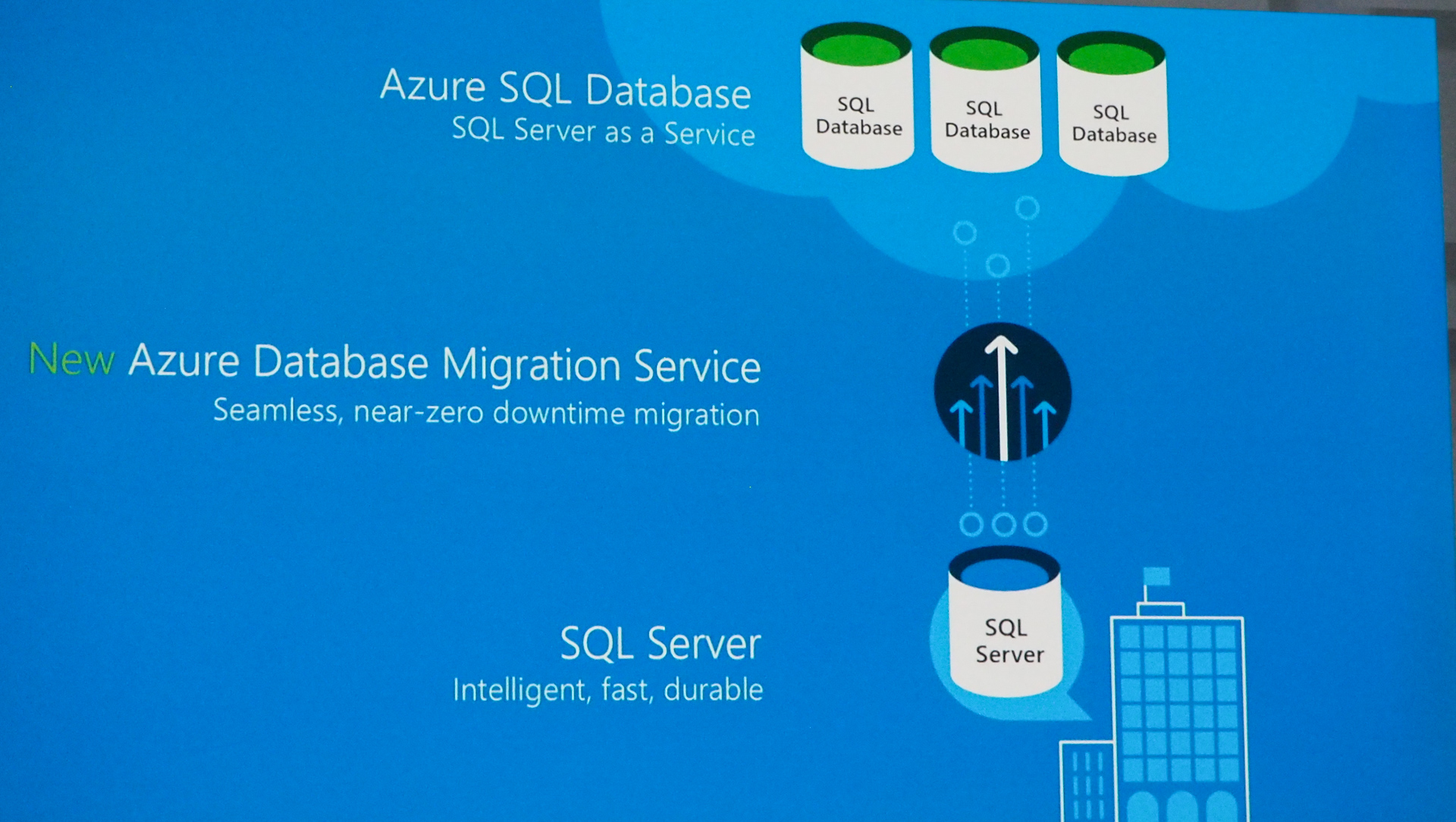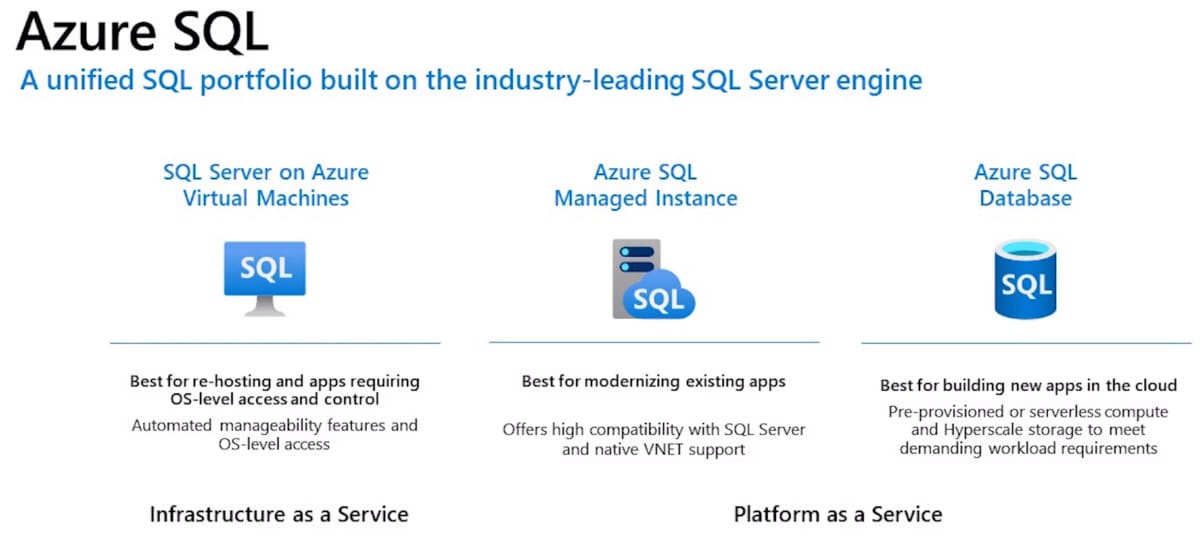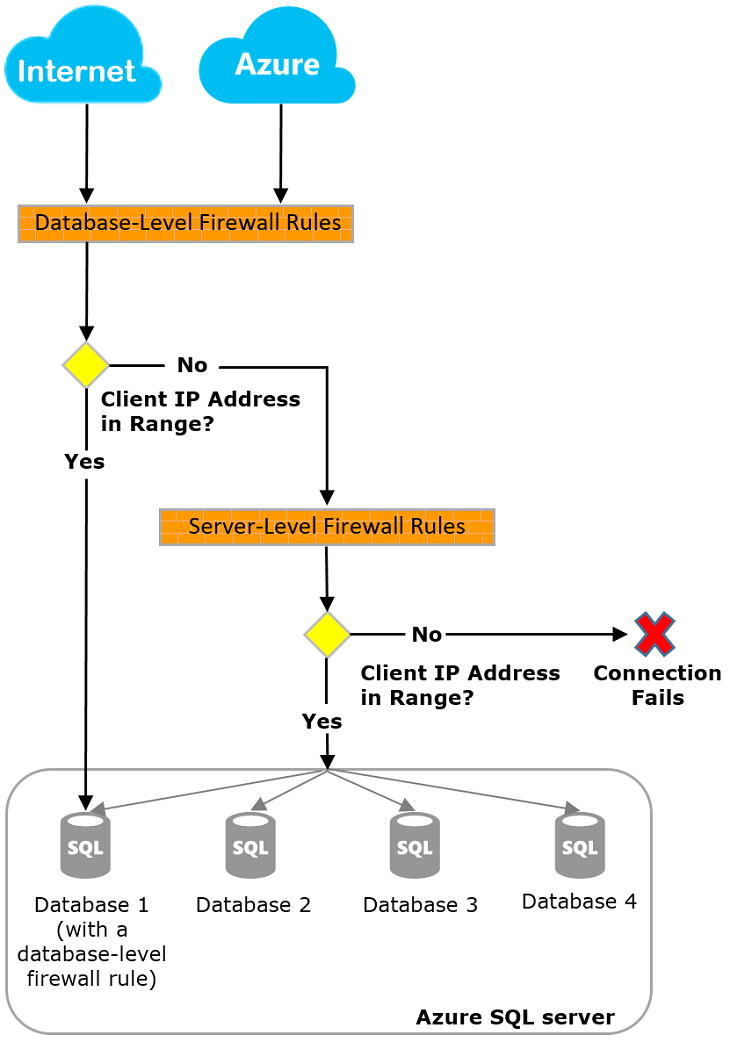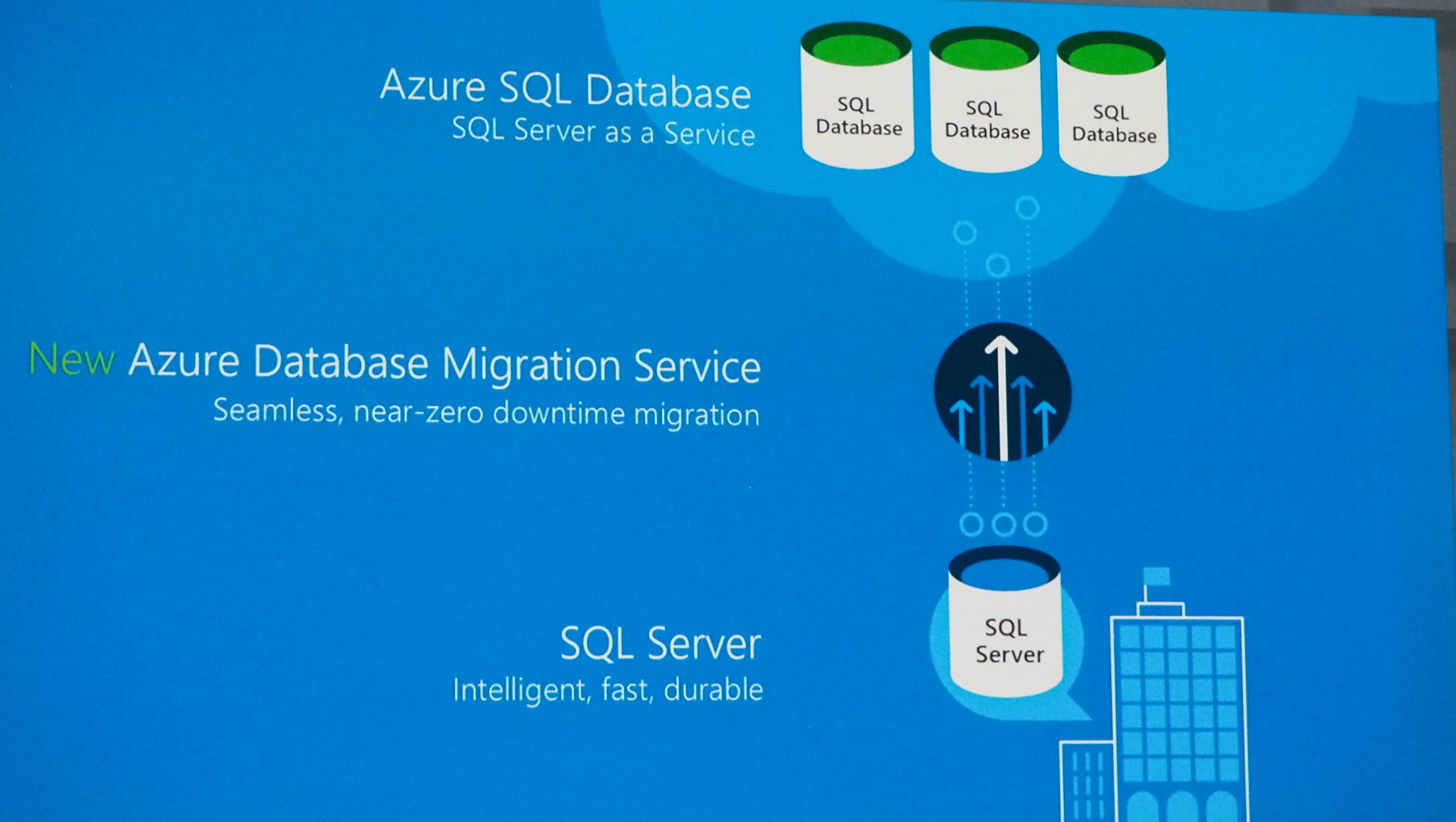What is SQL Database Azure?
SQL Database Azure is a fully managed cloud-based relational database service provided by Microsoft Azure. It is designed to support various database workloads and applications, offering scalability, security, and cost-effectiveness. SQL Database Azure is built on the SQL Server engine and provides a high level of compatibility with existing SQL Server applications and tools.
SQL Database Azure offers several benefits over traditional SQL databases. Its cloud-based infrastructure enables organizations to scale their databases up or down as needed, ensuring optimal performance during peak usage times. Additionally, SQL Database Azure provides robust security features, such as data encryption, access control, and threat detection, to protect sensitive information and prevent unauthorized access.
One of the most significant advantages of SQL Database Azure is its cost-effectiveness. Organizations can pay only for the resources they use, eliminating the need for expensive hardware and maintenance costs. Furthermore, SQL Database Azure offers built-in high availability and disaster recovery capabilities, ensuring business continuity and minimizing downtime.
In summary, SQL Database Azure is a powerful and flexible cloud-based relational database service that offers scalability, security, and cost-effectiveness. Its compatibility with existing SQL Server applications and tools makes it an ideal solution for organizations looking to modernize their database infrastructure and take advantage of the benefits of cloud computing.
Key Features and Capabilities of SQL Database Azure
SQL Database Azure is a powerful and feature-rich cloud-based relational database service that offers several key benefits for organizations. Its high availability feature ensures that databases are always available and accessible, with automatic failover and disaster recovery capabilities. SQL Database Azure also provides intelligent performance capabilities, such as automatic tuning and index management, to optimize database performance and minimize maintenance efforts.
One of the most significant advantages of SQL Database Azure is its built-in high availability feature. This feature ensures that databases are always available and accessible, even in the event of hardware failures or network outages. SQL Database Azure uses automatic failover and disaster recovery capabilities to minimize downtime and ensure business continuity. This feature is particularly useful for organizations that require high availability and uptime for their mission-critical applications and workloads.
SQL Database Azure also provides intelligent performance capabilities, such as automatic tuning and index management, to optimize database performance and minimize maintenance efforts. Automatic tuning uses machine learning algorithms to analyze database workloads and automatically adjust database settings to improve performance. Index management automatically creates and manages indexes to optimize query performance and minimize maintenance efforts.
SQL Database Azure also offers robust security features, such as data encryption, access control, and threat detection, to protect sensitive information and prevent unauthorized access. Organizations can use encryption to protect data at rest and in transit, and access control to manage user access and permissions. Threat detection uses machine learning algorithms to detect and respond to potential security threats, such as SQL injection attacks and anomalous database activity.
In summary, SQL Database Azure offers several key features and capabilities, including high availability, intelligent performance, and robust security. Its high availability feature ensures that databases are always available and accessible, while its intelligent performance capabilities optimize database performance and minimize maintenance efforts. Additionally, SQL Database Azure provides robust security features to protect sensitive information and prevent unauthorized access.
How to Migrate to SQL Database Azure
Migrating to SQL Database Azure can be a complex and challenging process, but with careful planning and execution, organizations can reap significant benefits. Here is a step-by-step guide to migrating to SQL Database Azure:
Step 1: Assessment
The first step in migrating to SQL Database Azure is to assess the current database environment. This includes identifying the databases and applications that will be migrated, evaluating the current infrastructure and performance, and determining the migration strategy.
Step 2: Planning
Once the assessment is complete, the next step is to plan the migration. This includes selecting the appropriate SQL Database Azure service tier, configuring the database and server settings, and creating a migration plan. The migration plan should include timelines, milestones, and contingency plans.
Step 3: Execution
The final step is to execute the migration. This includes creating the SQL Database Azure instance, migrating the data and applications, and testing the new environment. It is essential to monitor the migration process closely and address any issues or errors promptly.
When migrating to SQL Database Azure, there are several best practices to consider. These include:
- Performing a thorough assessment of the current database environment
- Selecting the appropriate SQL Database Azure service tier based on the organization’s needs and budget
- Configuring the database and server settings for optimal performance and security
- Testing the new environment thoroughly before deploying it in production
- Monitoring the new environment closely for any issues or errors
Migrating to SQL Database Azure can be a complex and challenging process, but with careful planning and execution, organizations can reap significant benefits. By following best practices and addressing potential challenges, organizations can ensure a successful migration and take advantage of the many benefits of SQL Database Azure.
Best Practices for Optimizing SQL Database Azure Performance
SQL Database Azure is a powerful and feature-rich cloud-based relational database service that offers several benefits for organizations. However, to get the most out of the platform, it is essential to optimize its performance. Here are some expert tips and strategies for optimizing SQL Database Azure performance:
1. Index Management
Indexes are critical for query performance in SQL Database Azure. It is essential to regularly review and manage indexes to ensure optimal performance. This includes creating indexes for frequently used queries, removing unnecessary indexes, and rebuilding or reorganizing indexes as needed.
2. Query Tuning
Query tuning is another critical aspect of optimizing SQL Database Azure performance. This involves analyzing queries and optimizing them for better performance. This can include rewriting queries, optimizing join operations, and using query hints to improve performance.
3. Caching
Caching is a technique that can significantly improve SQL Database Azure performance. By caching frequently accessed data, organizations can reduce the number of queries and improve response times. SQL Database Azure supports several caching options, including in-memory OLTP and Redis Cache.
4. Scaling
Scaling is another critical aspect of optimizing SQL Database Azure performance. By scaling up or out, organizations can ensure that their databases can handle increased workloads and traffic. SQL Database Azure offers several scaling options, including automatic scaling and manual scaling.
5. Monitoring
Monitoring is essential for optimizing SQL Database Azure performance. By monitoring database performance, organizations can identify and address issues before they become critical. SQL Database Azure offers several monitoring options, including Azure Monitor and SQL Database Azure Auditing.
In summary, optimizing SQL Database Azure performance requires a proactive and strategic approach. By implementing best practices such as index management, query tuning, caching, scaling, and monitoring, organizations can ensure optimal performance and get the most out of their investment in the platform.
Real-World Use Cases: Success Stories with SQL Database Azure
SQL Database Azure has been successfully implemented by many organizations across various industries. Here are some real-world use cases that demonstrate the benefits and capabilities of SQL Database Azure:
1. Healthcare
A healthcare organization used SQL Database Azure to migrate its patient data from an on-premises database to the cloud. By implementing SQL Database Azure, the organization was able to improve its data security, scalability, and availability. The organization also experienced a significant cost savings by eliminating the need for on-premises hardware and maintenance.
2. Retail
A retail company used SQL Database Azure to create a centralized database for its e-commerce platform. By implementing SQL Database Azure, the company was able to improve its database performance, scalability, and availability. The company also experienced a significant cost savings by eliminating the need for on-premises hardware and maintenance.
3. Finance
A financial services company used SQL Database Azure to migrate its financial data from an on-premises database to the cloud. By implementing SQL Database Azure, the company was able to improve its data security, scalability, and availability. The company also experienced a significant cost savings by eliminating the need for on-premises hardware and maintenance.
4. Manufacturing
A manufacturing company used SQL Database Azure to create a centralized database for its manufacturing operations. By implementing SQL Database Azure, the company was able to improve its database performance, scalability, and availability. The company also experienced a significant cost savings by eliminating the need for on-premises hardware and maintenance.
These real-world use cases demonstrate the benefits and capabilities of SQL Database Azure. By implementing SQL Database Azure, organizations can improve their database performance, scalability, and availability, while also experiencing significant cost savings. Additionally, SQL Database Azure offers robust security features and disaster recovery capabilities, making it an ideal solution for organizations that require high levels of data security and availability.
Security Considerations for SQL Database Azure
Security is a critical consideration for any organization that stores and manages sensitive data. SQL Database Azure offers robust security features and best practices to help organizations protect their data and maintain regulatory compliance.
Access Control
Access control is an essential aspect of database security. SQL Database Azure offers several access control options, including Azure Active Directory (AAD) integration, SQL authentication, and Azure AD authentication. By implementing access control, organizations can ensure that only authorized users have access to their databases.
Encryption
Encryption is another critical aspect of database security. SQL Database Azure offers several encryption options, including Transparent Data Encryption (TDE), Always Encrypted, and column-level encryption. By implementing encryption, organizations can ensure that their data is protected, both at rest and in transit.
Threat Detection
Threat detection is a proactive approach to database security. SQL Database Azure offers threat detection capabilities that can help organizations identify and respond to potential security threats. By implementing threat detection, organizations can detect and respond to security threats in real-time, minimizing the risk of data breaches and other security incidents.
Best Practices
To ensure optimal security for SQL Database Azure, organizations should follow several best practices. These include:
- Implementing access control and authentication
- Encrypting data at rest and in transit
- Implementing threat detection and response capabilities
- Regularly reviewing and updating security policies and procedures
- Maintaining regulatory compliance
By following these best practices, organizations can ensure that their SQL Database Azure deployments are secure and protected against potential security threats. Additionally, SQL Database Azure offers several security-related features and capabilities, such as network security groups, firewall rules, and virtual network service endpoints, that organizations can use to further enhance their database security.
Comparing SQL Database Azure with Other Cloud Database Platforms
When it comes to cloud database platforms, there are several options available to organizations. Two of the most popular options are SQL Database Azure and Amazon RDS. While both platforms offer similar capabilities, there are some key differences to consider when choosing the right platform for your organization’s needs.
SQL Database Azure
SQL Database Azure is a fully managed relational database service that offers high availability, disaster recovery, and intelligent performance capabilities. It is built on the same SQL Server engine as SQL Server, making it an ideal solution for organizations that want to migrate their existing SQL Server databases to the cloud. Additionally, SQL Database Azure offers several benefits, such as automatic patching and updates, automatic backups, and automatic tuning, that can help organizations optimize their database performance and reduce management overhead.
Amazon RDS
Amazon RDS is a fully managed relational database service that supports several database engines, including MySQL, PostgreSQL, and Oracle. It offers similar capabilities as SQL Database Azure, such as high availability, disaster recovery, and automatic backups. However, Amazon RDS does not offer automatic tuning capabilities, and it may require more manual management and configuration than SQL Database Azure.
Choosing the Right Platform
When choosing between SQL Database Azure and Amazon RDS, organizations should consider several factors, such as their existing database infrastructure, their performance and scalability requirements, and their security and compliance needs. Additionally, organizations should consider their budget and cost requirements, as well as their long-term database management and maintenance strategies.
In general, SQL Database Azure is an ideal solution for organizations that want to migrate their existing SQL Server databases to the cloud and take advantage of automatic tuning and other intelligent performance capabilities. On the other hand, Amazon RDS may be a better fit for organizations that require support for multiple database engines and have more complex database management and configuration requirements.
Ultimately, the choice between SQL Database Azure and Amazon RDS will depend on an organization’s specific needs and requirements. By carefully evaluating the capabilities and features of each platform, organizations can choose the right cloud database platform that meets their needs and helps them achieve their business objectives.
The Future of SQL Database Azure: Trends and Innovations
SQL Database Azure is a powerful and constantly evolving platform that offers organizations a wide range of benefits and capabilities. As the platform continues to grow and innovate, it is important for organizations to stay up-to-date with the latest trends and developments to ensure they are getting the most out of their investment.
Emerging Trends
One of the most significant trends in the world of cloud databases is the increasing adoption of serverless computing. Serverless computing allows organizations to run their applications and services without having to manage the underlying infrastructure. This can help organizations reduce costs, improve scalability, and increase agility.
Another trend to watch is the growing use of artificial intelligence (AI) and machine learning (ML) in database management. AI and ML can help organizations automate routine tasks, optimize performance, and make more informed decisions about their database environments. Additionally, the use of containers and Kubernetes is becoming increasingly popular in the world of cloud databases, as it allows organizations to easily deploy and manage their database workloads in a scalable and flexible way.
Innovations in SQL Database Azure
Microsoft is constantly innovating and adding new features to SQL Database Azure. Some of the most exciting recent innovations include:
- Hyperscale: A new service tier that offers extreme scalability and performance for large-scale databases.
- Intelligent Performance: A set of features that use AI and ML to optimize database performance, including automatic index management and query tuning.
- Azure Synapse Analytics: A new analytics service that allows organizations to combine their relational and non-relational data into a single, unified platform.
Preparing for the Future
To prepare for the future of SQL Database Azure, organizations should consider several best practices. These include:
- Staying up-to-date with the latest trends and developments in cloud databases.
- Regularly reviewing and optimizing their database environments to ensure they are getting the most out of their investment.
- Implementing robust security and compliance measures to protect their data and meet regulatory requirements.
- Exploring new technologies and innovations, such as serverless computing, AI, and ML, to see how they can be leveraged to improve database management and performance.
By staying up-to-date with the latest trends and innovations in SQL Database Azure, organizations can ensure they are getting the most out of their investment and positioning themselves for success in the years to come.






